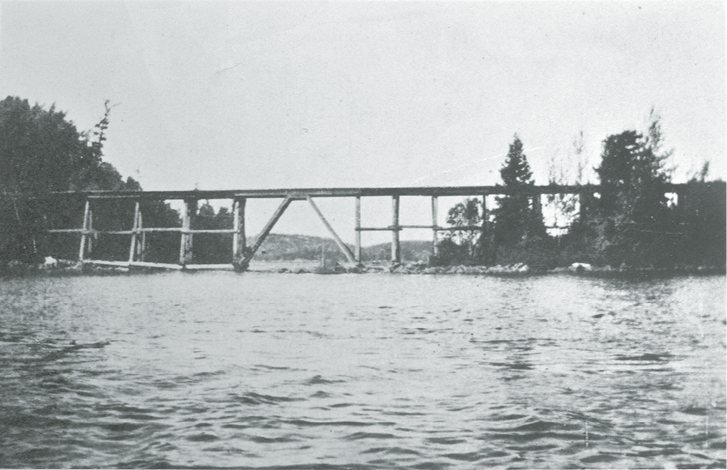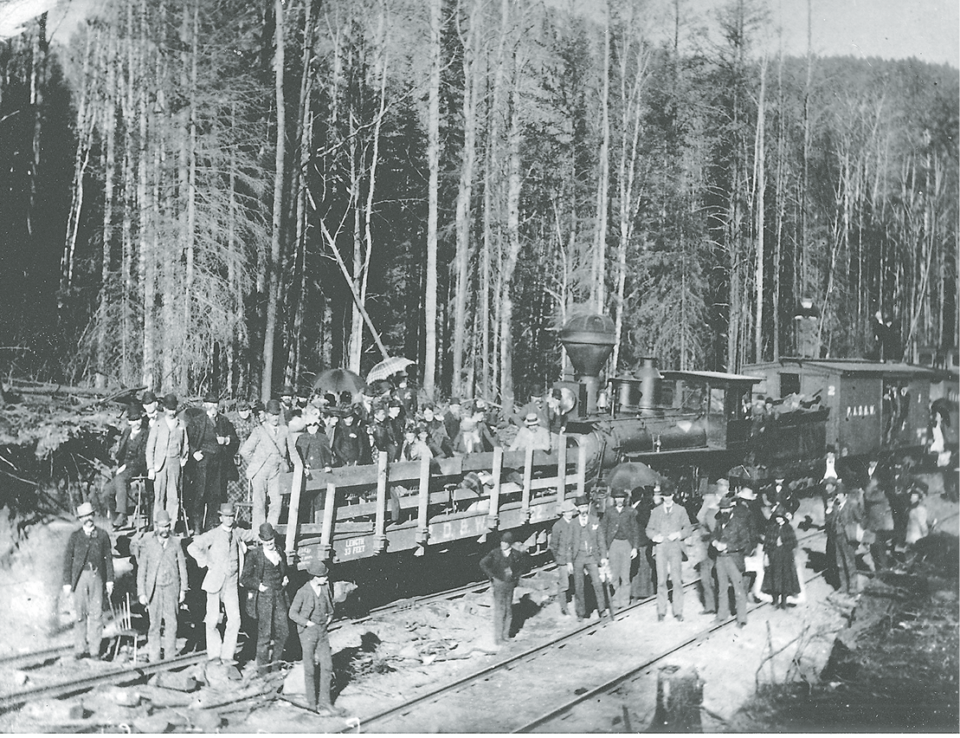A train service from Thunder Bay to Duluth might have happened if things had worked out differently for the Port Arthur, Duluth and Western Railway, built 1889-92. (Port Arthur is now part of the city of Thunder Bay.)
The idea for the rail line Thunder Bay & Minnesota Railway came from U.S. General Edward A. Wild, a surgeon, Civil War veteran and co-owner of the Rabbit Mountain silver mine discovered in 1881 southwest of Thunder Bay. At the time, barrels of silver ore were transported by horse-drawn wagons on a five-mile rough country road to Kaministiquia River for transport by ship. Wild’s proposal was for a railway to primarily transport silver and cargo to Port Arthur, but it did not receive government approval. Another proposal in February 1883 was granted by Ontario government with charter to the Thunder Bay Colonization Railway (TBCR).
At about the same time on the U.S. side, construction started on Duluth & Iron Range Railway, which could link with Thunder Bay’s TBCR for a railway run between Duluth and Port Arthur. Things didn’t quite work out though, as the Canadians could not afford to build their railway without a government subsidy program, which had just been discontinued.
However, after TBRC changed its name to Port Arthur, Duluth and Western Railway (PAD&W) in 1887, government subsidies were available again and provided funds to build the railway along with substantial backing from Toronto investors. Construction started in fall of 1889. The first carload of silver ore was shipped to Port Arthur in March 1891 and in 1892 the railway was completed to Gunflint Lake. It then crossed on trestle bridge over Gunflint Narrows into Minnesota.
“A six-mile branch, the Port Arthur, Duluth & Western Railway of Minnesota incorporated in 1892 [U.S. extension of PAD&R], was constructed across the Ontario-Minnesota border to the Gunflint Lake, Minnesota iron mine. The engineering was very difficult as the 5.75-mile line had to climb, through the use of a number of switchbacks, nearly 250 feet in elevation in that short distance,” reported Thunder Bay railway researcher-historian David Battistel.
The mine owned by Gunflint Lake Iron Mine, aka Paulson Mine, had signed a 10-year contract with PAD&W to transport one million tons of ore. Another U.S. potential mine developer, Richard “Iron King” Paulison, was negotiating shipping 20 carloads of iron ore daily from their proposed mine to a new smelter they would build in Port Arthur. Plans were in early stages to construct PAD&W to Ely, connecting there with a U.S. line to Duluth.

About 350 feet from the Paulson Mine, U.S. promoters were developing the mining camp into a booming metropolis called “Gunflint City.” One building on site was the Hotel de Maugerite, owned by the famous well-known Fort William madam, Margaret “Mag” Mathews; who had secured for her “large boarding house,” the first liquor license ever issued in Cook County. Building lots were sold by the American Realty Company, a company incorporated by major promoters John Paulson and Kristian Kortgaard (president of the State Bank of Minneapolis), who were also directors of the Gun Flint Lake Iron Company and the Minnesota PAD&W. In August 1893, Paulson Mine’s first iron ore carload was shipped to Port Arthur.
Things looked good–what could go wrong?
Well, for starters, when the silver market plummeted, the silver mines closed in 1891-92. Iron ore mining by Paulison, the Iron King, was scuttled when he committed suicide in December 1892. Then, a month after the first carload, the Paulson/Gunflint mine went bankrupt, due to low iron ore prices, the stock market crash and Panic of 1893. That same year, the mine’s director Kortgaard was arrested, eventually convicted of embezzlement and sent to jail.
During PAD&W’s first year of operation, ended in June 30, 1894, it had travelled nearly 20,000 miles, carried 3,237 passengers and 44,940 tons of freight. At the time, according to historian-author Elinor Barr in her book Thunder Bay: Port Arthur, Duluth and Western Railway, the railway owned four locomotives, two first-class and four second-class passenger cars, two baggage cars, 10 boxcars, 85 flatcars and three cabooses. That first year also ended with a net loss of $1,370.
The losses continued. Four years later in 1898, the railway was bankrupt and was purchased by Canadian Northern Railway. In 1901, the former PAD&W became known as the Canadian Northern Railway-Duluth Extension. A forest fire destroyed a 1,000-foot trestle bridge in 1909, severing the rail line to Minnesota. And in 1920, it all became part of the Canadian National Railway.
Passengers and freight continued to use what became known as the Pee-Dee Railway. The writing however was on the wall for the line’s demise. In 1938, the CNR abandoned the Pee-Dee Railway and removed the rails a year later.
While the Duluth link was never realized, Elinor Barr wrote, “However, it is clear that the PAD&W and its successors played a major role in defining Thunder Bay’s waterfront and business district…..The PAD&W also provided regular public transportation to the international boundary, and a comfortable ride to the Boundary Waters.”






